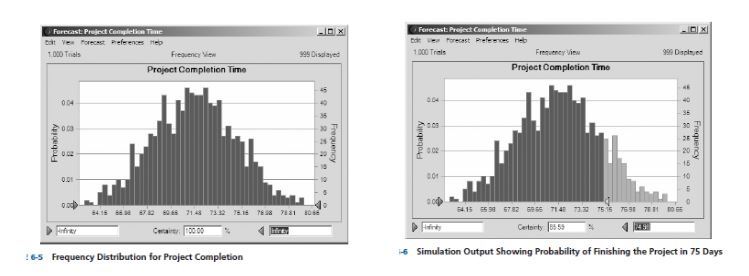1. System Analogy
- bases a current work package time estimate on the actual time of a work package from a similar project already completed
- Usually done in a “Top-down” approach
- Have 3 or 4 experts review requirements
- Make sure you have the experience and that the two systems are very similar
- Can use time, or LOC, or Function Points
Package-Level or Bottom-Up Analogy
- Involves estimating individual work activities and summing them to get a project total
- Each person assigned to that work activity, does the estimate
- Can be time intensive to develop
- Dependent on each individual’s ability to estimate
- Combining several independent estimates yields a better estimate than separate estimates. Errors are randomly distributed; statistically speaking
2. Three Point
- Use a weighted average approach or beta probability distribution approach to capture three point estimates for each
work package: Optimistic, Normal, Pessimistic
- Equations for expected value (E), and the standard deviation (SD) are:
E = (a + 4b + c)/6; SD = (c-a)/6
a = the optimistic estimate
b = normal estimate
c = pessimistic estimate
- Adds the element of risk into its calculations
- SME’s determine three types of estimates:
Most Likely
Optimistic
Pessimistic
- Next the SME uses the weighted average formula
Weighted average = #(8 workdays + 4 X 10 workdays + 24 workdays = 12 days)/6#
where:
optimistic time= 8 days
most likely time = 10 days
pessimistic time = 24 days
- Therefore, you’d use 12 days on the schedule instead of 10 when using this technique.
3. Simulation
- A technique that randomly generates specific end values for a variable with a specific probability distribution

4. COCOMO
- First developed by Barry Boehm in 1981
- Most widely accepted models available today
- Revised into version II in 1995
- Version II setup to handle new development methodologies; RAD, Iterative/Incremental, COTS packages, O-O application distribution, frameworks and components, etc.
- Models available on website and algorithms are published. Commercial software exists
- Consists of three project types described as:
(i). Organic – small project teams, little innovation, constraints and deadlines are few, stable development environments,
known familiar technology, few changes expected
(ii). Semidetached – medium sized project teams, some innovation, few constraints, tighter deadlines, and more changes
expected, still a fairly stable development environment
(iii). Embedded – largest of the three in all categories, large project teams, constant innovation, many constraints, very tight deadlines, and many changes expected, complex development environment.
francis1897 answered the question on
March 14, 2023 at 06:29